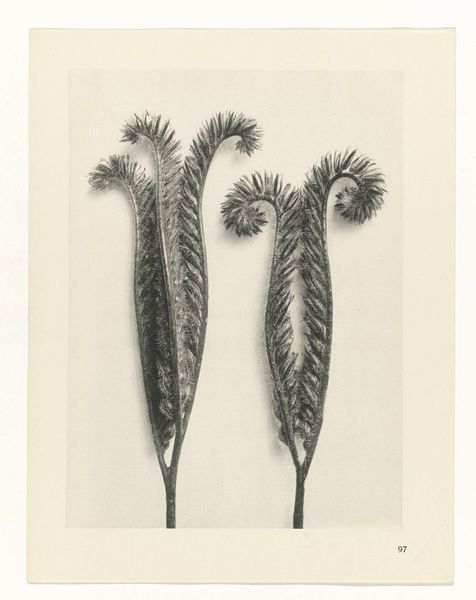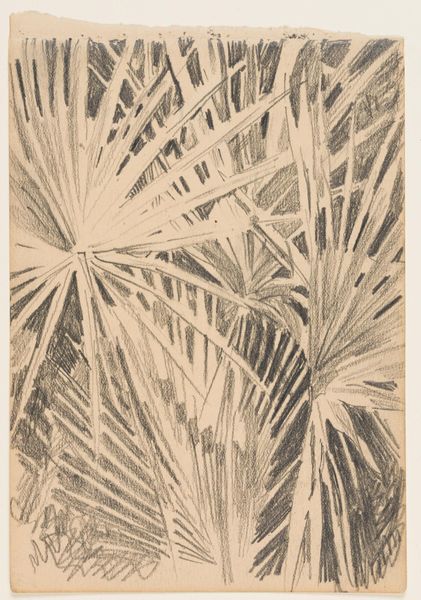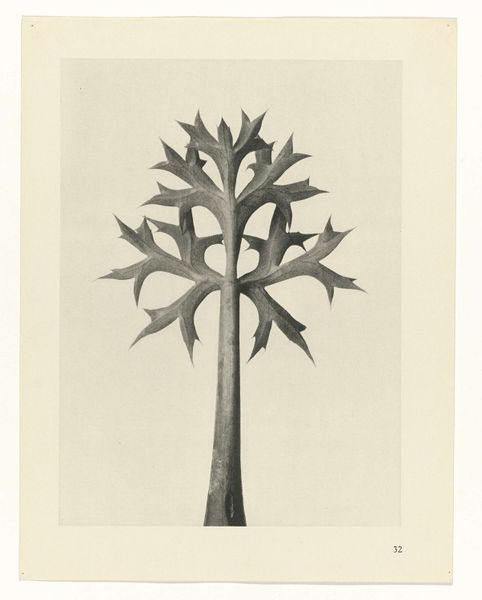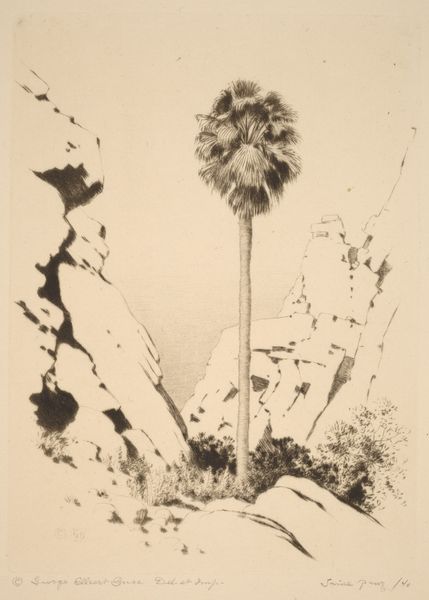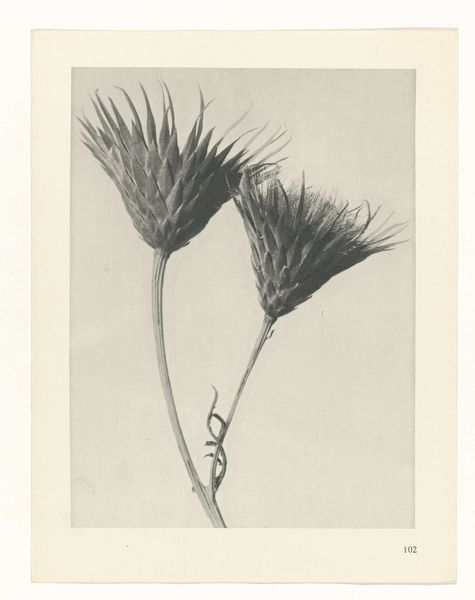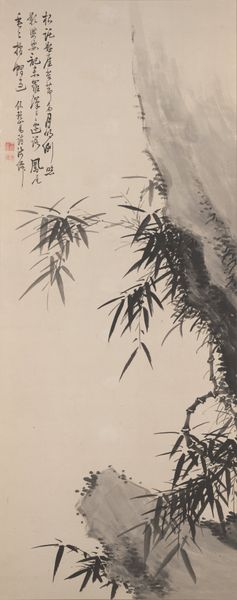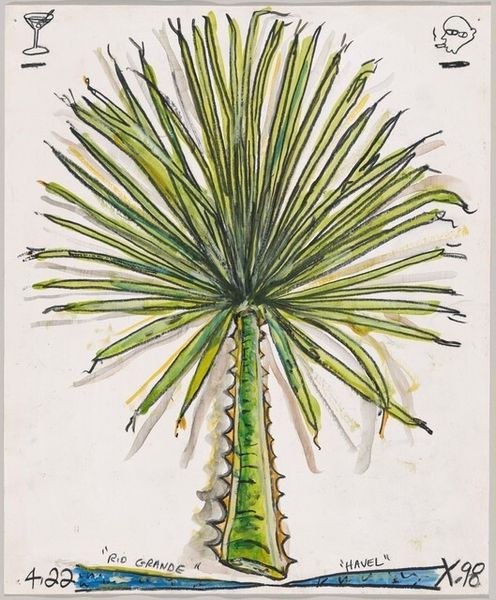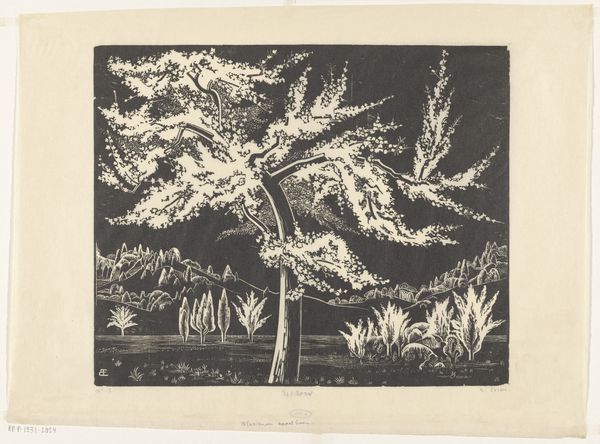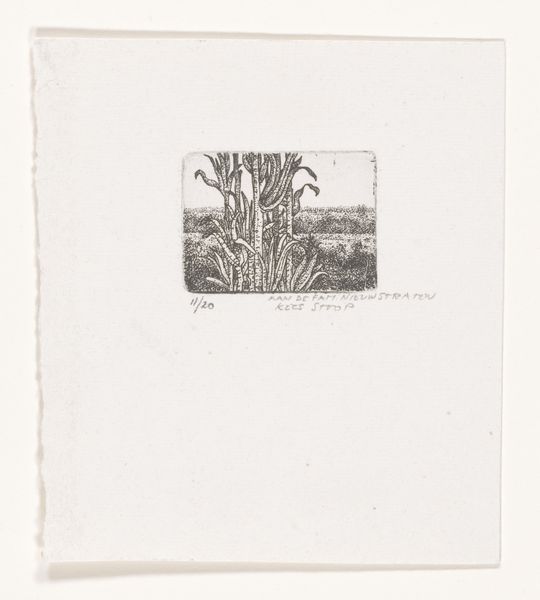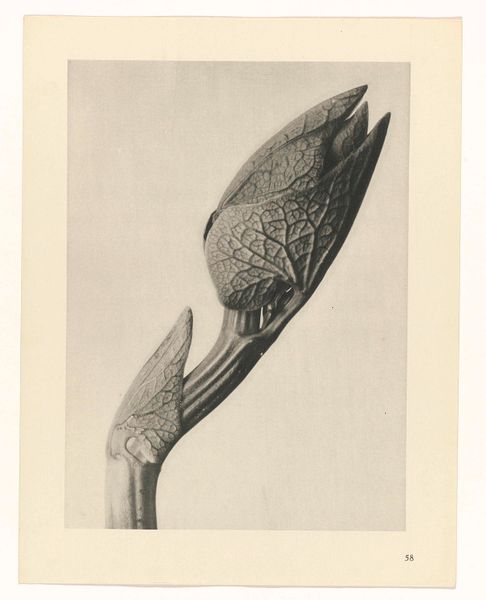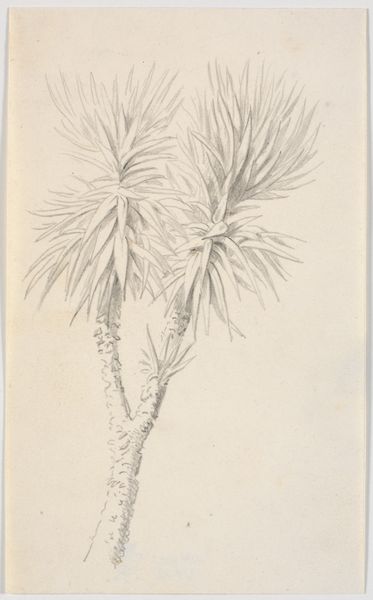
photography
#
photography
#
geometric
#
naturalism
Dimensions: height 312 mm, width 242 mm
Copyright: Rijks Museum: Open Domain
Curator: What strikes me immediately is the symmetry of the plant forms against this neutral background. There's a structured austerity here. Editor: I see something both alien and deeply familiar. The repeating circular patterns are compelling. I’m drawn to the symbolism of natural forms in strict compositions. Curator: That's interesting. What draws you to these kinds of images? Let me tell you about the context surrounding this photogravure: It's titled "Plant Study," or "Pflanzenstudie," created in 1928 by Karl Blossfeldt, and it's currently part of the Rijksmuseum's collection. Editor: Ah, Blossfeldt. So the early modernist movement is using the plant world. To me, that’s about finding order in the chaos of nature, seeing sacred geometry reflected in the mundane. There is almost a kind of anthropomorphism in how the forms mimic a pair of faces looking in on one another... I'd love to know more about that. Curator: Well, it reflects the era's fascination with scientific documentation combined with an artistic vision. Photography gained new value as a tool of objective representation, but Blossfeldt utilized it to unveil the inherent, often overlooked, beauty in nature's architecture, offering that aesthetic awareness to the burgeoning field of art. The almost obsessive cataloging he undertook allowed for him and his colleagues to display to others, in art gallery and museum formats, how beautiful even weeds can be when viewed with a particular attention to detail. Editor: The repetition and almost brutal composition seem very appropriate, because a picture says a thousand words... do we view this particular artwork as art or education? Curator: The question about art versus documentation is valid! I see this photograph fitting both spheres, a sentiment of education and also art! It transcends both art galleries and biology textbooks because it also provides a unique perspective. Editor: Exactly. And in these repeating patterns, I perceive archetypal symbols of growth, decay, resilience... Curator: Which allows for a different experience, beyond that simple understanding of whether something belongs in an institute of scientific excellence, or whether something is for a person of fine art understanding to discuss within that type of institutional frame. A very beautiful, balanced discussion. Editor: So, nature contains codes that mirror human experiences? Very astute indeed. Curator: Indeed, an insight provided for an artist to discover as a bridge. Editor: Fascinating, how an ostensibly objective image sparks so many symbolic interpretations.
Comments
No comments
Be the first to comment and join the conversation on the ultimate creative platform.
